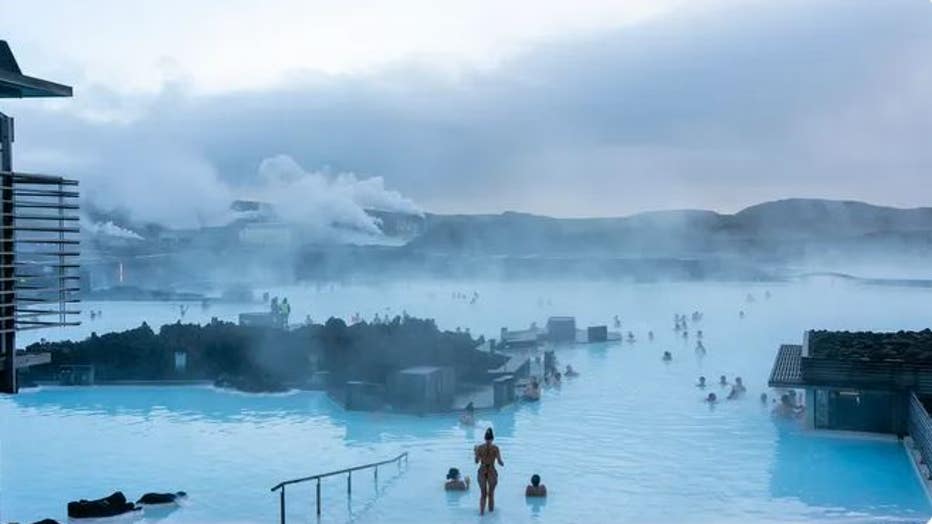1,400 earthquakes rattling Iceland's Blue Lagoon in just 24 hours sends tourists packing
Tourists stand in the Blue Lagoon outside Reykjavik on April 26, 2009. The Blue Lagoons blue and green waters come from natural hot water springs flowing through rocks of lava. (OLIVIER MORIN/AFP / Getty Images)
ICELAND - Iceland's famed Blue Lagoon has temporarily closed after 1,400 earthquakes in just 24 hours rattled the nerves of resort guests.
The wellness spa resort is based around a lagoon of geothermal heated seawater which harnesses the power of the nearby Fagradalsfjall volcanic complex.
"Blue Lagoon has proactively chosen to temporarily suspend operations for one week, despite the authorities not raising the current level of uncertainty during this period of seismic activity," the resort said in a statement. "This affects all of our operations: Blue Lagoon, Silica Hotel, Retreat Spa, Retreat Hotel, Lava and Moss Restaurant."

File: Blue Lagoon, Grindavík, Iceland. The geothermal activity also powers an electric plant seen in the background.
A whole lot of shaking
The earthquake activity recently ramped up after starting on October 25, according to the Icelandic Met Office. In all, local media reports that 22,000 quakes have shaken the Reykjanes Peninsula. Seven of the temblors measured above magnitude 4.0, with the strongest hitting just after midnight Thursday of magnitude 4.8.
"The seismic activity last night and this morning is an example of this episodic seismic activity that can be expected while magma accumulation is in progress," wrote the IMO. "The fact that there are now larger earthquakes than before in the area does not necessarily mean an increased rate of magma accumulation."
News reports about the seismic activity have shaken prospective guests, including an American family traveling in Iceland that decided to steer clear.
"We were all very aware of the earthquake/volcano situation," Chase Nunes, who was vacationing in Iceland, told FOX Weather. "We moderately thought about going there (to the lagoon). However, once we heard about the rocks going into the lagoon and some tour operators refusing to go there, that was our cue to avoid that area."
Quakes may signal volcanic eruption
Magma is pooling in what the IMO called an "inflation event." Starting October 27, the molten rock began accumulating in a horizontal sill about 3 miles below the surface, forcing the earth up or inflating it. The office estimated that the magma inflow is 176 cubic feet per second. That is enough to fill up an Olympic-sized pool every eight minutes.
The Department of Civil Protection and Emergency Management declared a Civil Protection Service Level of Uncertainty due to the earthquakes. The level of uncertainty means increased monitoring of the situation that could lead to a threat to the health and safety of people, the environment or the settlement.
"A series of earthquakes began earlier this week and is still ongoing," stated the visitors' bureau's website. "This does not mean that an eruption is imminent, but the area is being closely monitored for any changes. Visitors and hikers are encouraged to stay away from mountains and slopes in the area due to the danger of rockfalls and landslides."
The site noted that the increased quake activity is similar to the events before the eruption of Mt. Fagradalsfjall last year and this summer.
The IMO noted that the magma inflow on Monday was four times greater than the highest inflow during the previous inflation events.
"Signs of magma coming towards the surface would appear as increased, shallower seismicity and rapid crustal deformation at the surface as well as volcanic tremor, which is a high rate of many small earthquakes," wrote the IMO on Nov. 4. "At the moment no clear signs can be seen of any of this, but the situation can change on short notice."
This summer's eruption was part of the Fagrandalsfjall volcano area, which previously erupted in August 2022 and March 2021. Before then, it was considered to be dormant for more than 6,000 years.

